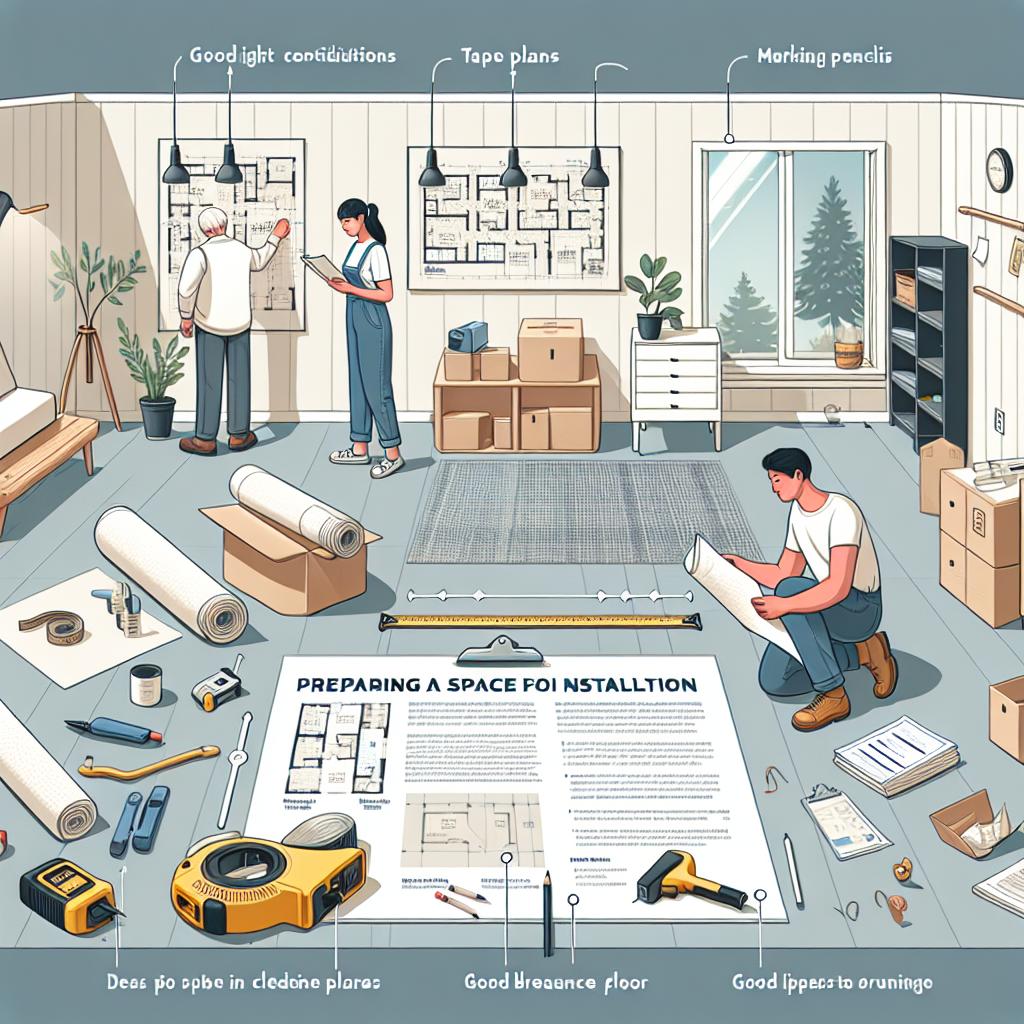As summer heatwaves roll in and indoor temperatures soar, the quest for a comfortable business environment becomes paramount. Enter the mini split air conditioning system—a sleek, efficient solution that marries cooling power with versatility. But for business owners and facility managers, the journey to installation can seem daunting, filled with technical jargon and installation challenges. Fear not! In this ultimate guide, we will navigate the ins and outs of installing a mini split AC unit in your business setting. From understanding components and selecting the right system to navigating installation logistics and ensuring optimal performance, we’ll equip you with the knowledge you need to create a cool oasis for your employees and customers alike. Whether you’re retrofitting an older building or outfitting a new space, let’s demystify the process and help you embrace a more comfortable indoor climate.
Choosing the Right Mini Split AC System for Your Business Needs
When selecting a mini split AC system for your business, it’s essential to evaluate the unique requirements of your space. Consider the following factors to ensure you make the best choice:
- Space Size: Measure the square footage of the area you need to cool. Larger spaces may require multiple indoor units.
- Energy Efficiency: Look for units with high SEER (Seasonal Energy Efficiency Ratio) ratings to minimize energy costs.
- Noise Level: Choose a model that operates quietly to maintain a comfortable atmosphere for employees and clients.
- Installation Flexibility: Ensure the system can be installed in various configurations for optimal air distribution.
Additionally, consider your business’s specific cooling needs by figuring in:
- Heat Load: Evaluate how many employees, computers, and appliances generate heat in your workspace.
- Future Expansion: Opt for a system that can be easily scaled if your business grows.
- Control Options: Look for systems that allow for zoning control or smart thermostats to enhance comfort and energy savings.
- Aesthetics: Choose a design that complements your business’s interior design while offering efficiency.
Lastly, it can be beneficial to consult with an HVAC professional who can provide tailored recommendations based on your specific business conditions. They can help you assess the best units available to suit your needs, often leading to significant long-term savings and improved comfort.

Preparing Your Space for Installation: Key Considerations and Tips
Before the installation of a mini split AC system, it’s essential to evaluate your business space to ensure optimal functionality and efficiency. Start by assessing the layout of your work areas, noting where the units will be installed and how the air will circulate. Look for potential obstructions, such as furniture or partitions, that may hinder airflow. Additionally, consider the thermal characteristics of your space. Factors such as large windows, insulation quality, and the number of occupants can significantly impact the unit’s performance. Make sure to space out the indoor units based on the square footage they need to cover, as well as account for the outdoor unit’s placement for effective ventilation.
Another crucial aspect to consider is accessibility for maintenance and repairs. Ensure that indoor units can be easily reached for filter changes and servicing. Establish a safe perimeter around the outdoor unit, preventing any debris or vegetation from blocking vents. Additionally, think about the electrical requirements for each unit. It’s advisable to work with a qualified professional to ensure the installation complies with local codes and is capable of meeting your business’s cooling demands. Below are some essential factors to keep in mind:
- Clear space: Keep pathways clear to allow easy access to maintenance panels.
- Power sources: Verify that electrical outlets are conveniently located.
- Airflow: Outline possible airflow paths to maximize efficiency.
- Noise consideration: Position the units away from workspace areas to minimize noise disruptions.

Step-by-Step Installation Process: Ensuring Optimal Performance
Installing a mini split AC requires careful attention to detail to ensure it operates efficiently throughout its lifespan. Start by selecting the ideal location for both the indoor and outdoor units. Consider factors such as accessibility for maintenance, proximity to power sources, and avoiding direct sunlight exposure. Prepare your installation area by clearing any obstructions, which may impede airflow. Make sure to have all tools and materials ready, including mounting brackets, refrigerant lines, and electrical supplies, to streamline the process. Following this, create a level mounting area for the indoor unit, as it’s crucial for optimal performance and proper drainage.
Next, you will need to install the outdoor unit. Position it on a sturdy platform or concrete pad, ensuring there’s adequate space around it for airflow and maintenance. Connect the refrigerant lines and electrical wiring carefully, following the manufacturer’s guidelines to prevent leaks or electrical issues. Once everything is set up, it’s essential to test the system before fully integrating it into your business. Monitor for any unusual sounds, leaks, or irregularities in cooling. Compiling a checklist of these steps can serve as a quick reference during installation:
- Choose optimal locations for both units
- Prepare the installation site
- Install the indoor unit securely
- Position the outdoor unit on a solid base
- Connect refrigerant lines and electric supplies correctly
- Conduct a thorough system test

Maintenance and Troubleshooting for Long-Lasting Efficiency
To ensure your mini split AC unit operates at peak efficiency for years to come, regular maintenance is essential. Establish a maintenance routine that includes:
- Cleaning or replacing filters: This should be done every one to three months, depending on usage and air quality conditions.
- Inspecting and cleaning the outdoor unit: Remove any debris like leaves, dirt, and grass that may obstruct airflow.
- Checking the refrigerant levels: Low refrigerant can indicate a leak, requiring professional service.
- Scheduling annual professional maintenance: Technicians can perform in-depth checks and cleanings to prevent unexpected breakdowns.
In the event of troubleshooting, be aware of common issues that may arise. Refer to the following table for quick reference on troubleshooting steps:
| Issue | Possible Solution |
|---|---|
| AC not cooling | Check thermostat settings and ensure filters are clean. |
| Strange noises | Inspect for loose parts or debris in the unit. |
| Water leaks | Check drain lines for clogs and ensure proper installation. |
| Unit not turning on | Inspect power supply and ensure circuit breakers are functioning. |
Q&A
Q&A: The Ultimate Guide to Installing Mini Split AC in a Business Setting
Q1: What is a mini-split AC system, and why should businesses consider it?
A1: A mini-split AC system is a compact and efficient air conditioning solution that comprises an outdoor compressor and one or more indoor units. Businesses should consider mini-split systems because they offer flexible installation options, individual temperature control for different zones, and significantly improved energy efficiency compared to traditional HVAC systems. This can lead to lower energy bills and enhanced comfort for both employees and customers.
Q2: How do I determine the right size mini-split AC for my business?
A2: Sizing is crucial for effective cooling and energy efficiency. To determine the appropriate size, you’ll need to calculate the total BTU (British Thermal Units) required based on factors such as the area of the space, ceiling height, number of windows, and local climate. Consulting with a professional HVAC technician can help ensure accurate sizing to avoid overworking the system or inadequate cooling.
Q3: What is the installation process for a mini-split AC system in a business setting?
A3: The installation process involves several key steps: selecting the ideal locations for the indoor and outdoor units, drilling holes for the refrigerant lines and electrical connections, mounting the indoor units on walls, and connecting them to the outdoor compressor. Proper insulation is essential to prevent energy loss, and it’s advisable to follow manufacturer guidelines closely. While some small installation tasks can be DIY-friendly, hiring a certified technician is recommended for safety and efficiency.
Q4: Are there any specific electrical requirements for installing a mini-split AC?
A4: Yes, mini-split AC units require specific electrical provisions. Each indoor and outdoor unit needs its own dedicated circuit to prevent overload. The wiring and disconnect switches should comply with local electrical codes to ensure safety. It’s best to consult an electrician to assess your current setup and make any necessary upgrades before installation.
Q5: Can mini-split systems provide heating as well?
A5: Absolutely! Many mini-split systems are equipped with heat pump technology, allowing them to switch between heating and cooling modes. This versatility makes them a great option for year-round climate control, helping to keep your business comfortable throughout all seasons without the need for separate heating systems.
Q6: How do I maintain my mini-split AC system after installation?
A6: Regular maintenance is key to maximizing the performance and lifespan of your mini-split AC system. Simple tasks include cleaning or replacing air filters monthly, checking for refrigerant leaks, and ensuring that the outdoor unit is clear of debris and obstructions. Additionally, scheduling professional maintenance at least once a year can help catch potential issues early and keep the system running smoothly.
Q7: What are some common misconceptions about mini-split AC systems?
A7: One common misconception is that mini-split systems are too noisy. While early models might have had some noise issues, modern units are designed for quiet operation. Another misconception is that they are only suitable for homes; however, mini-splits are increasingly popular in commercial settings due to their adaptability and efficiency. Lastly, some believe they are difficult to install; when done by professionals, installation can be straightforward and minimally invasive.
Q8: How do I choose between different brands and models?
A8: When selecting a mini-split brand or model, consider factors like energy efficiency ratings (SEER), warranty offers, installation expertise, customer service, and specific features such as smart controls or multi-zone configurations. Reading customer reviews and consulting with HVAC professionals can provide valuable insights to help make an informed decision tailored to your business’ unique needs.
Conclusion:
Installing a mini-split AC in your business can significantly enhance your environment for both staff and clients. With the right knowledge, decisions, and maintenance, it can also be a long-term investment that pays dividends in comfort and efficiency. Whether you’re just starting your journey into climate control or looking to upgrade your existing system, this ultimate guide serves as a reliable roadmap for success.
Key Takeaways
installing a mini split AC system in your business is not just about comfort; it’s a strategic investment in productivity, employee satisfaction, and energy efficiency. By following the steps outlined in this guide, you can transform your workspace into a climate-controlled haven that caters to the needs of both employees and customers alike. Remember, a well-cooled environment can lead to increased focus, enhanced creativity, and an overall boost in morale. So, equip yourself with the knowledge, plan meticulously, and take the plunge into a more comfortable business operation. As you embark on this journey, may your efforts not only bring a chill to the air but also warmth to the workplace atmosphere, ensuring that both productivity and well-being thrive.

